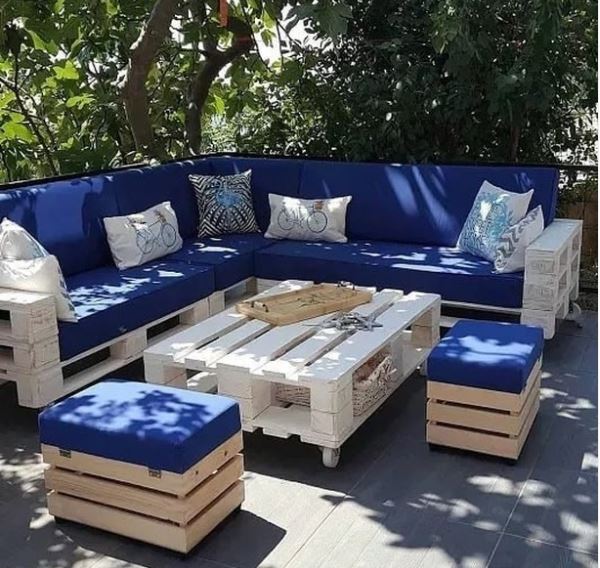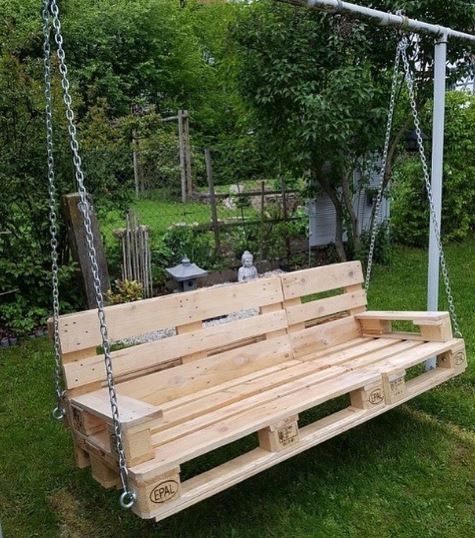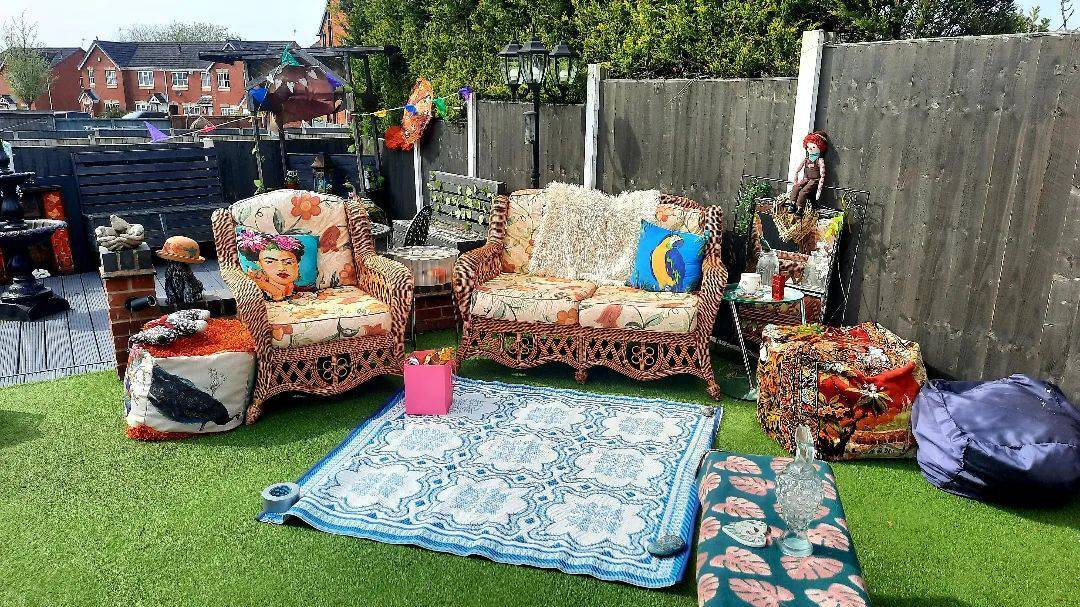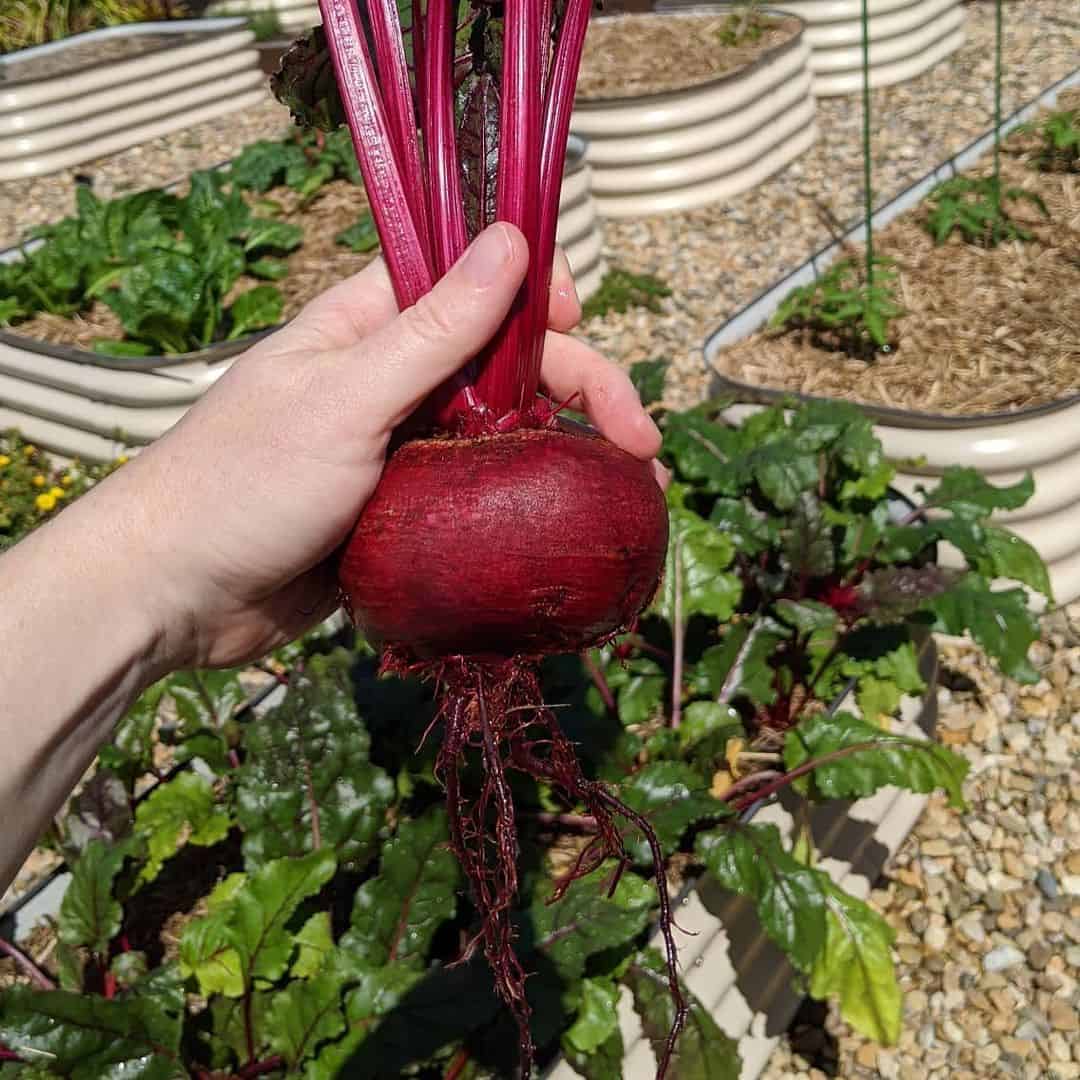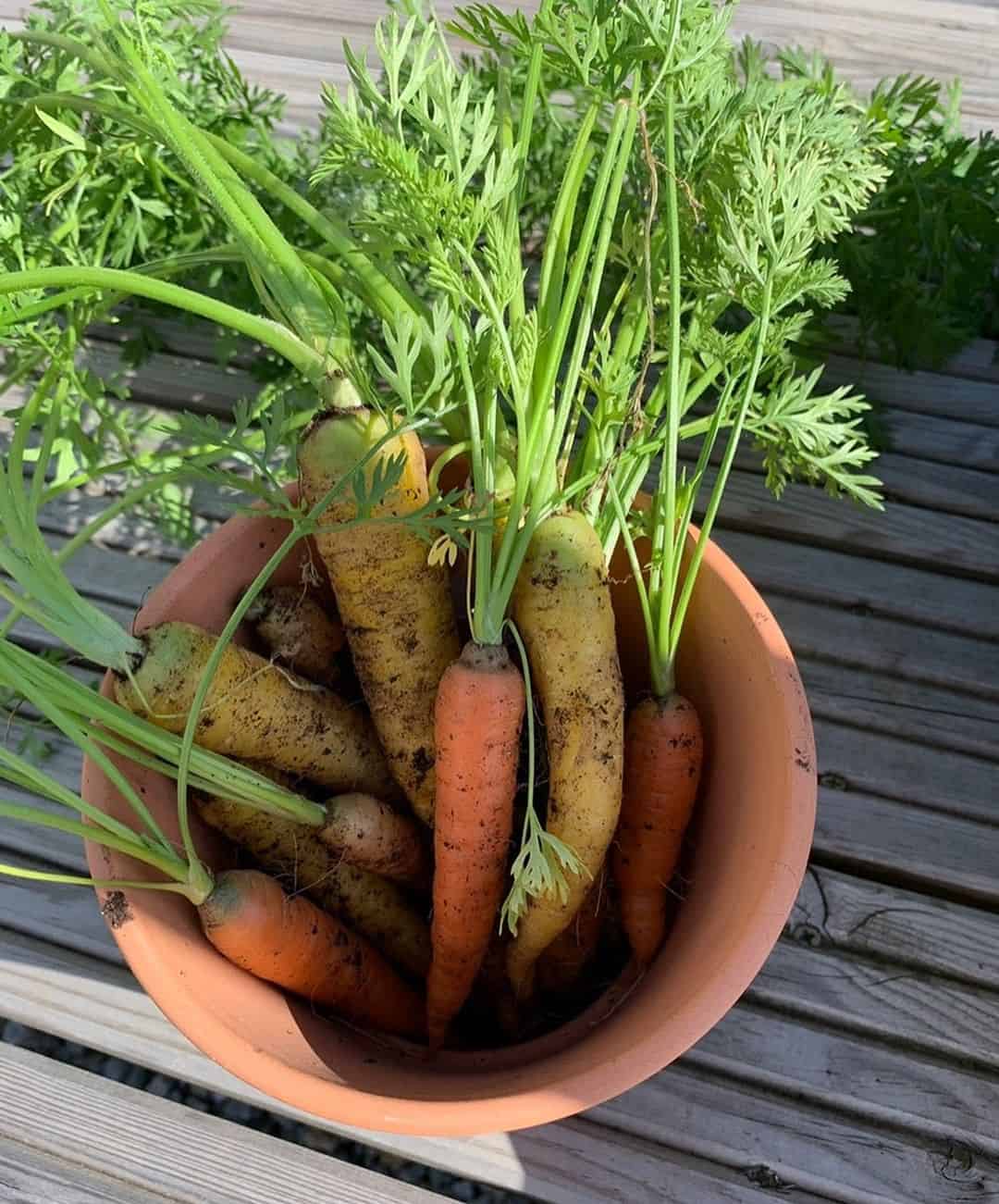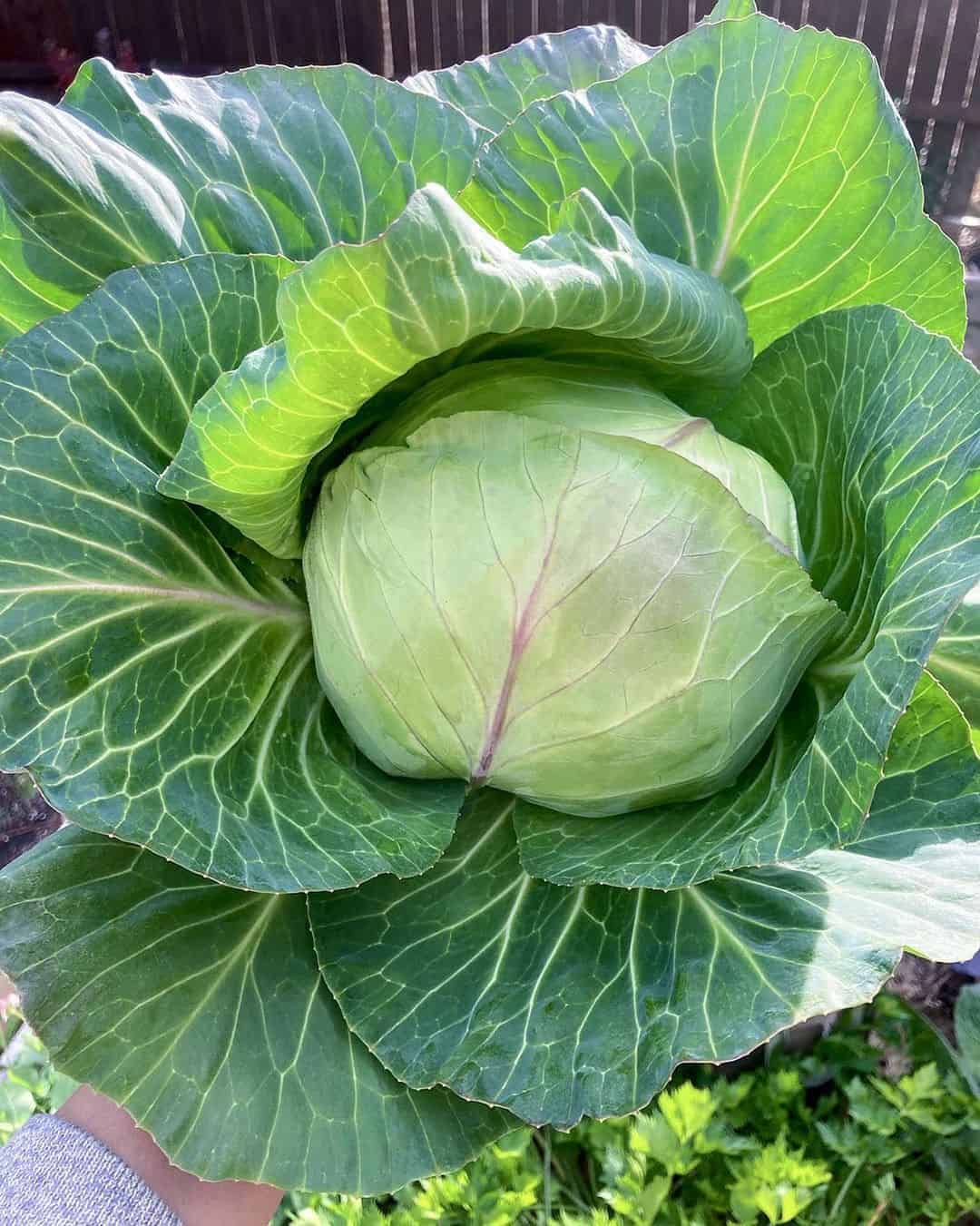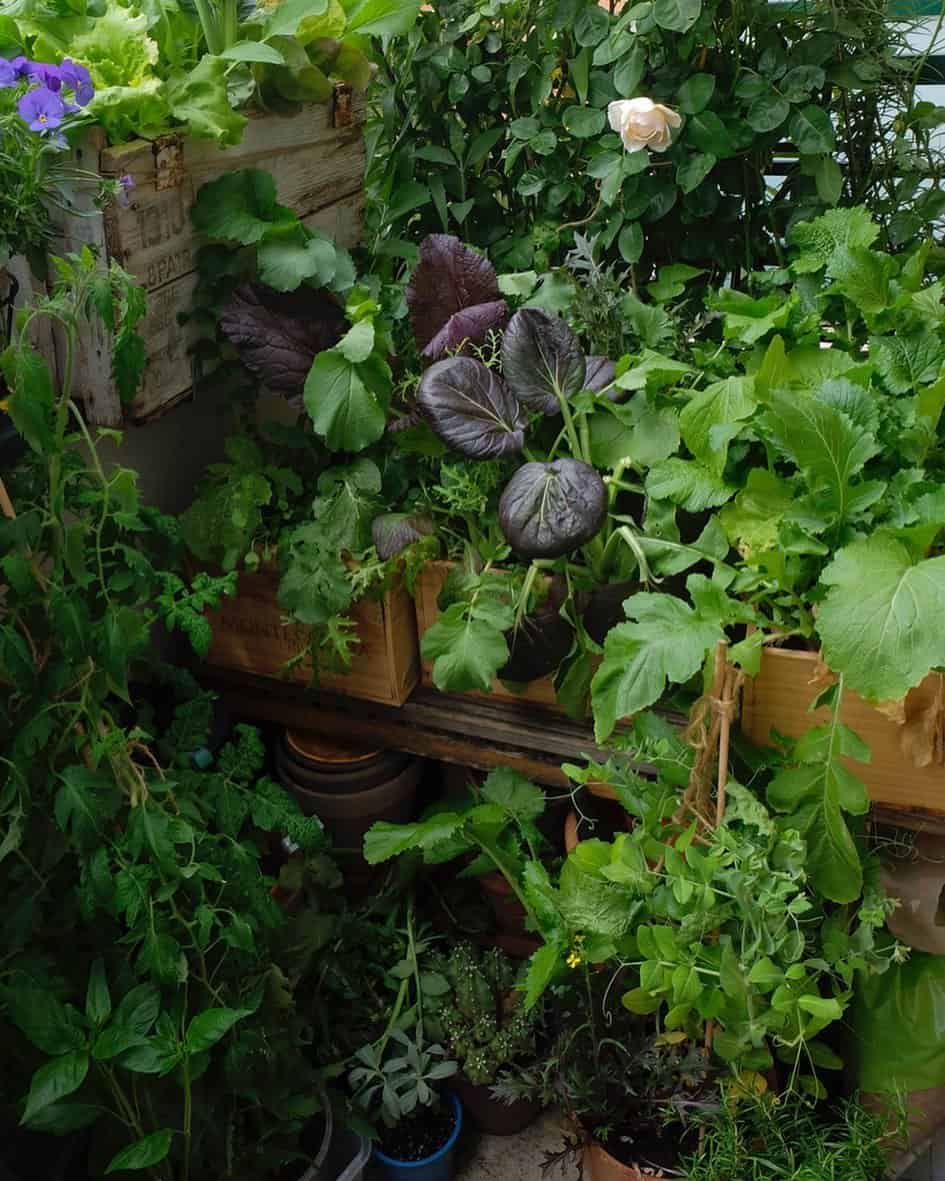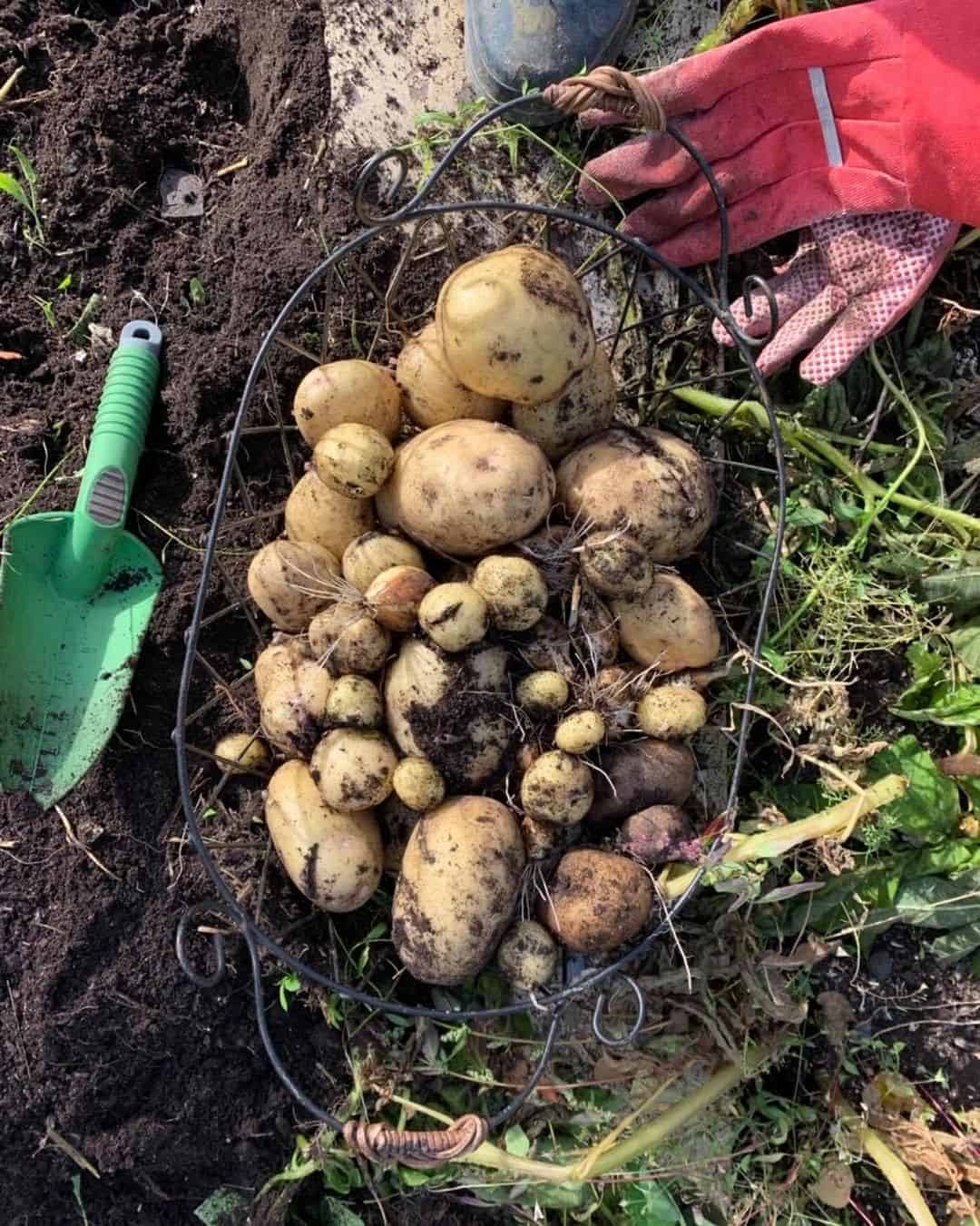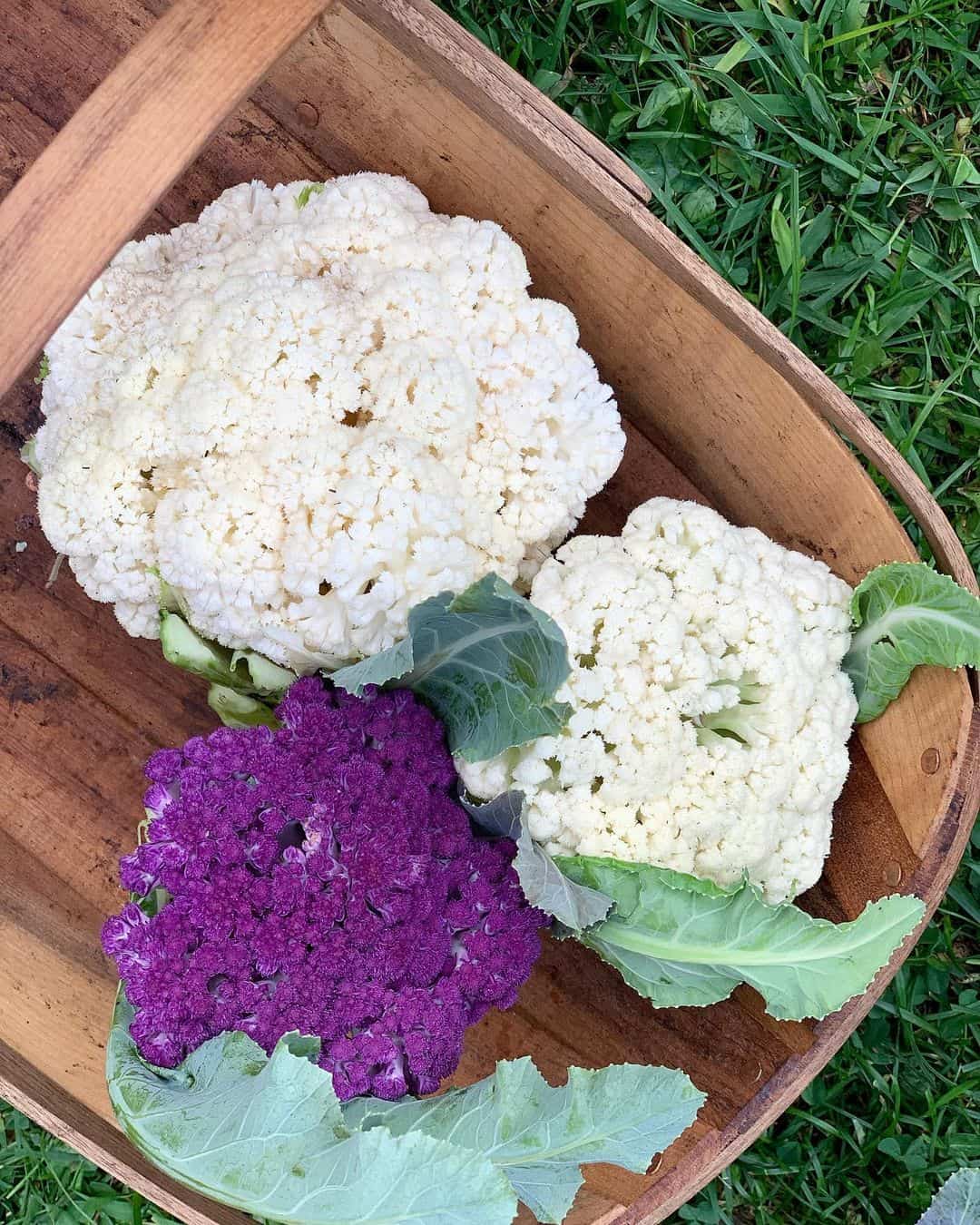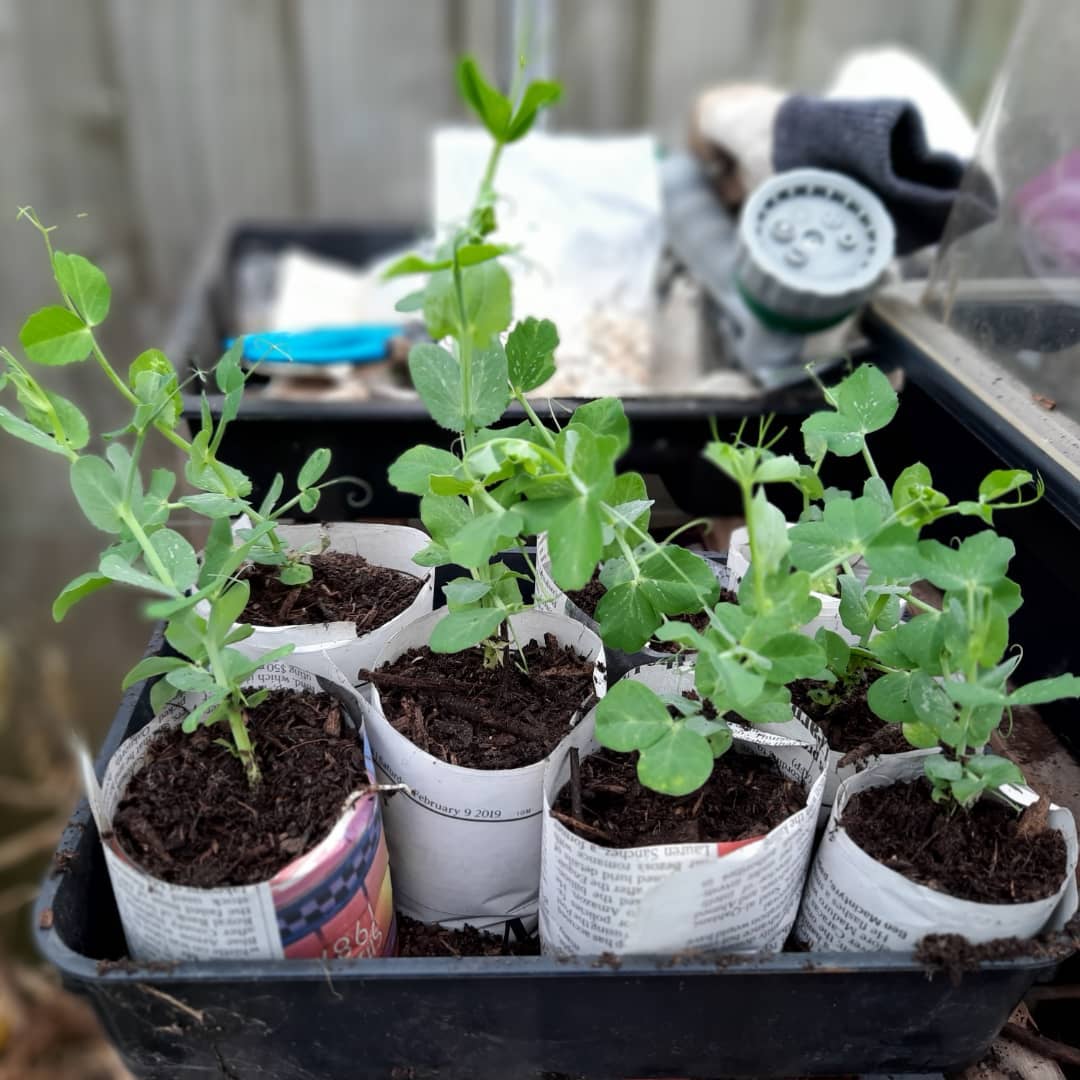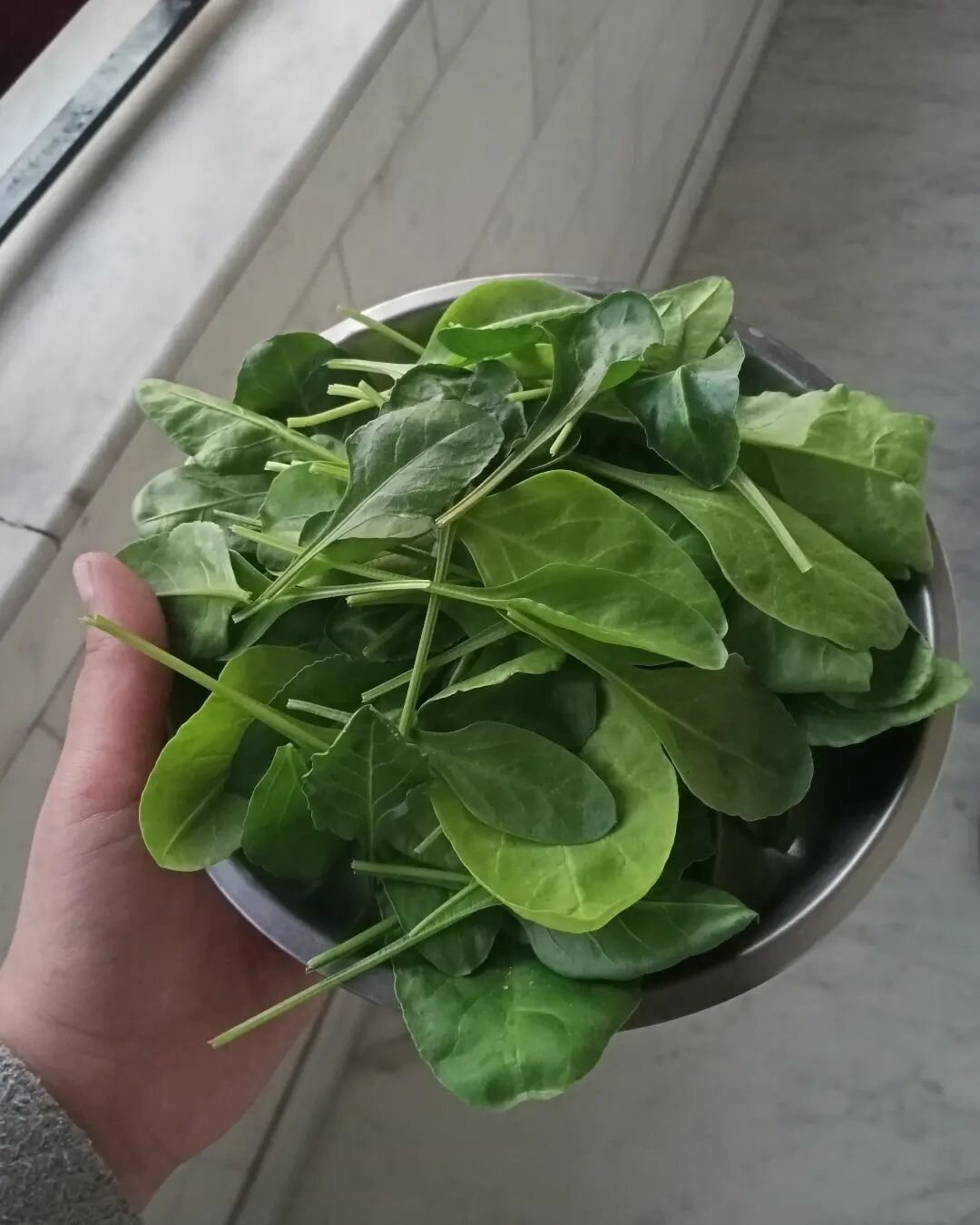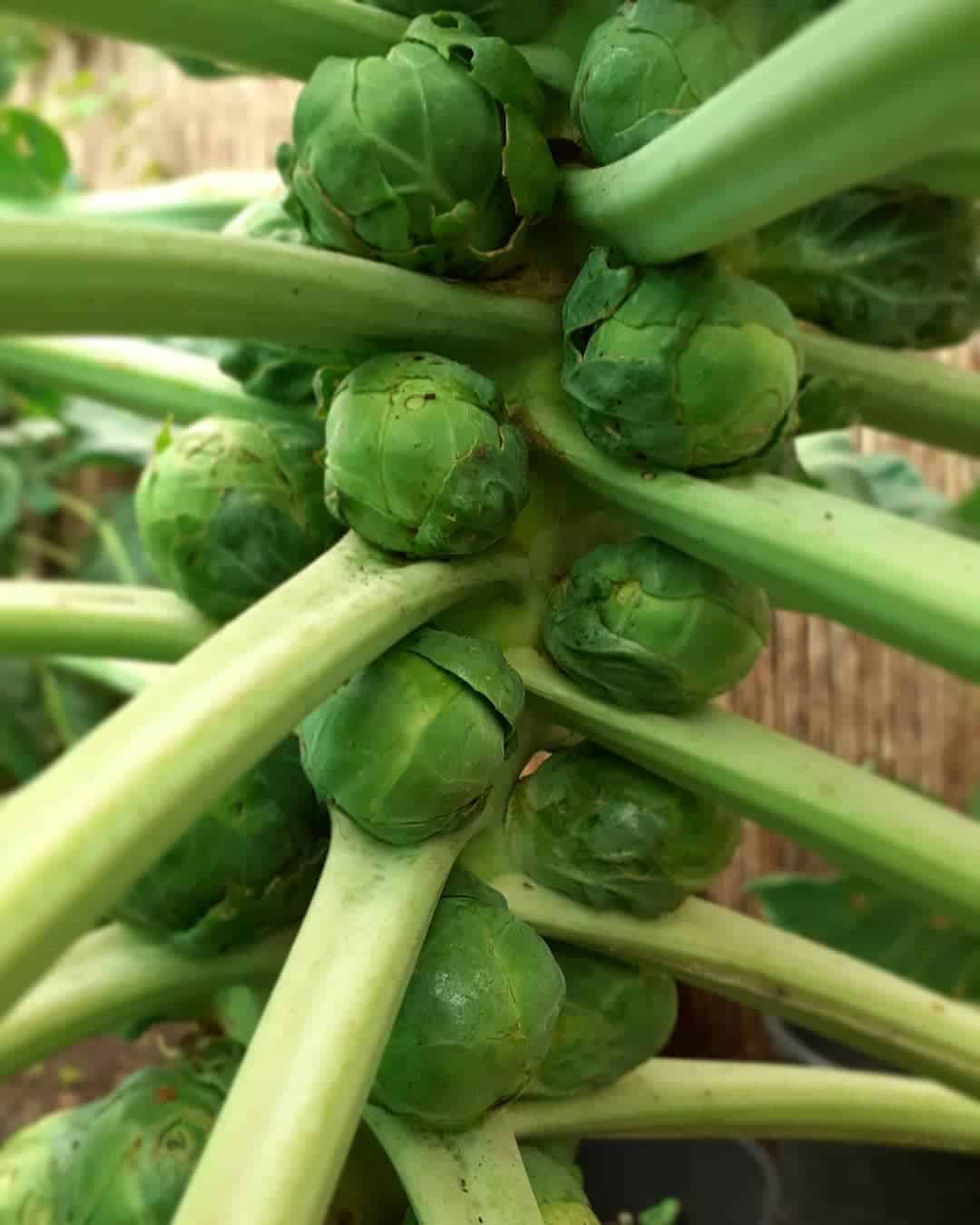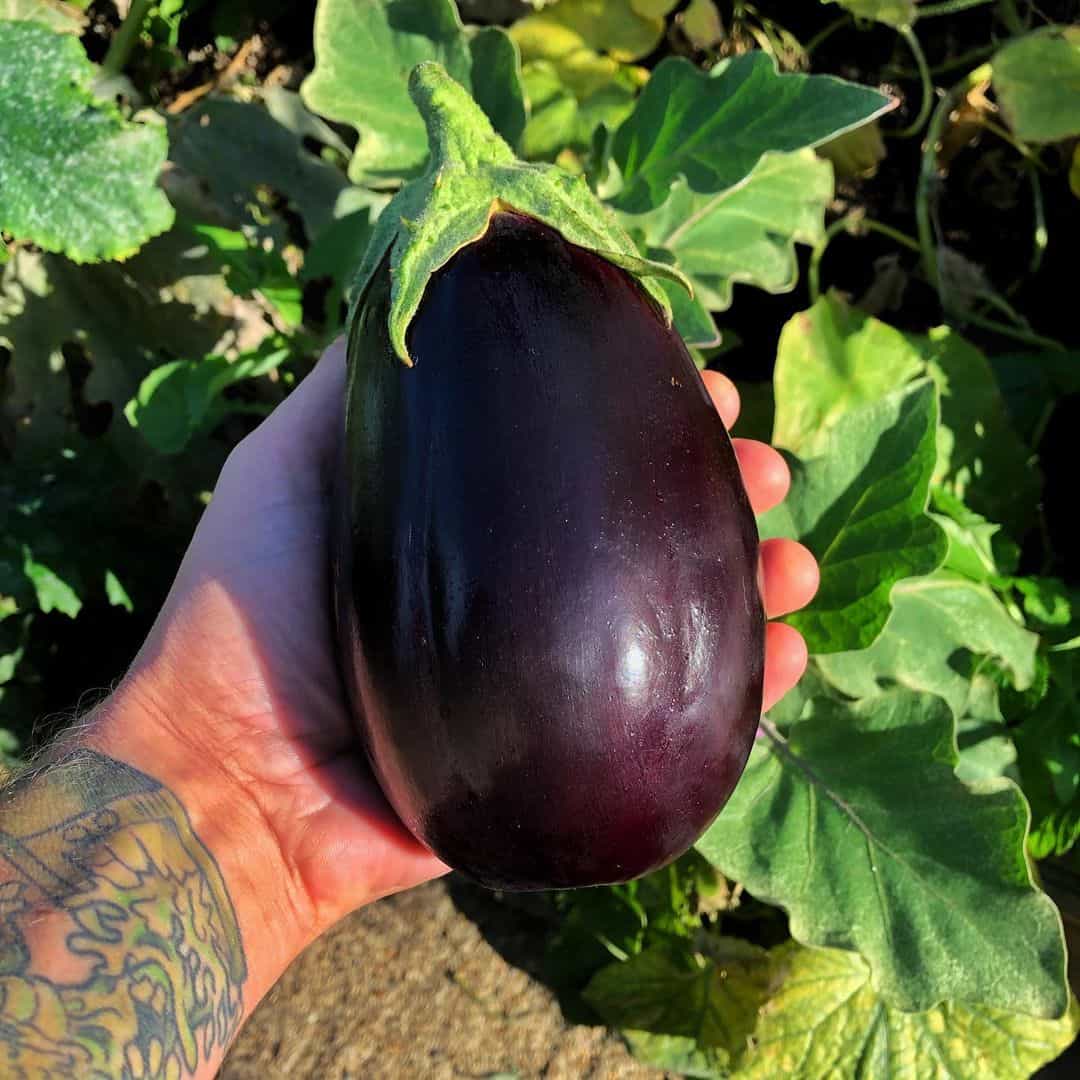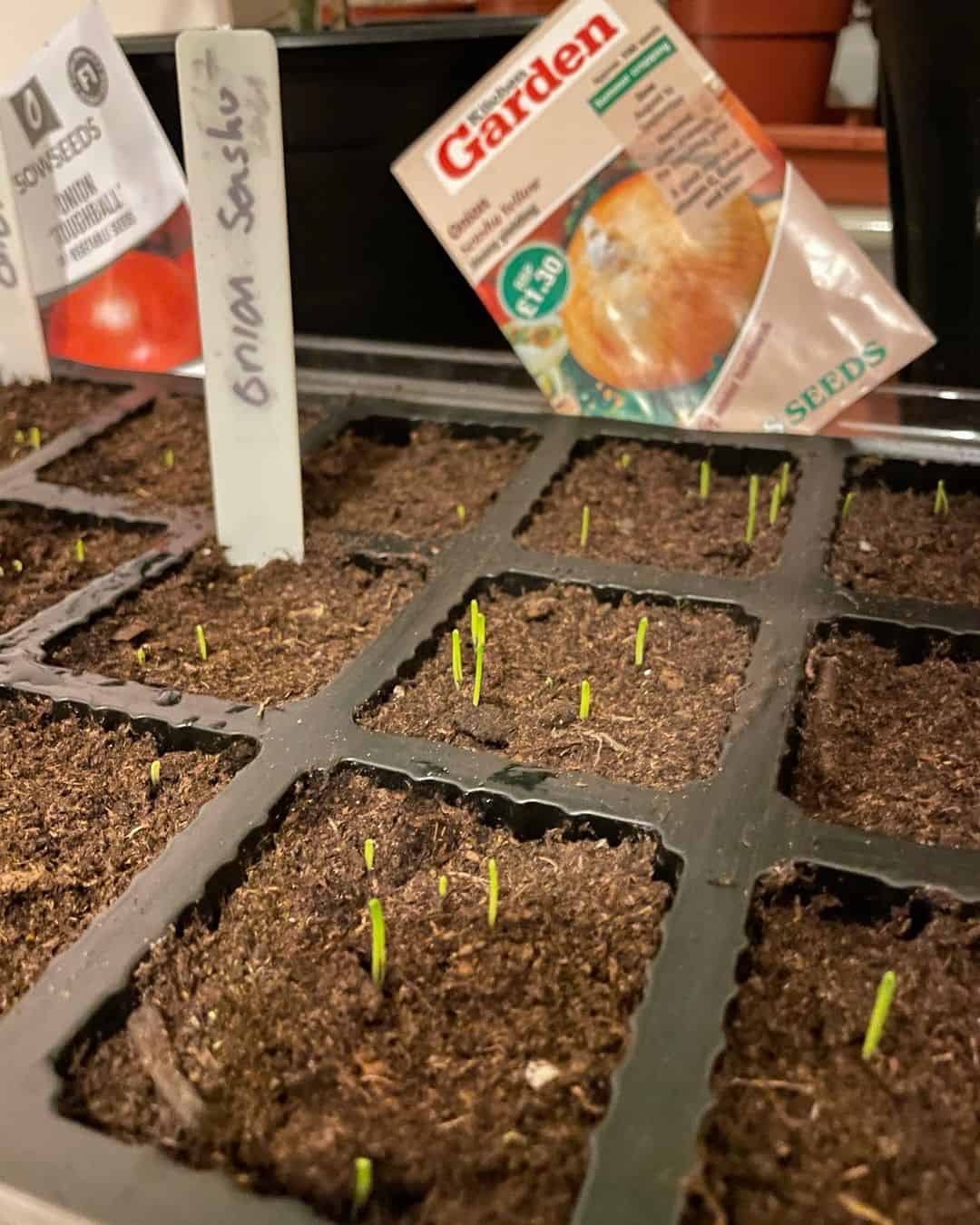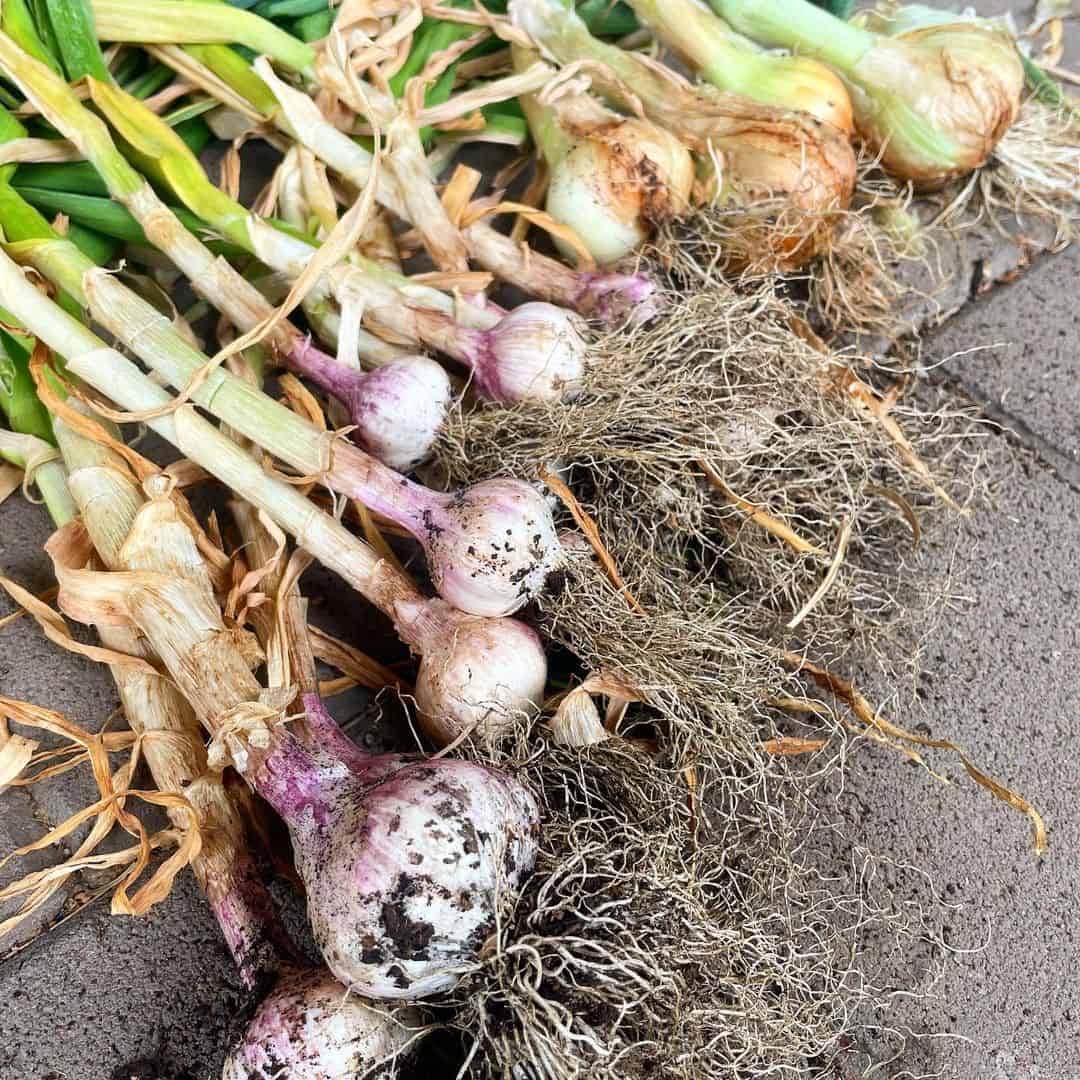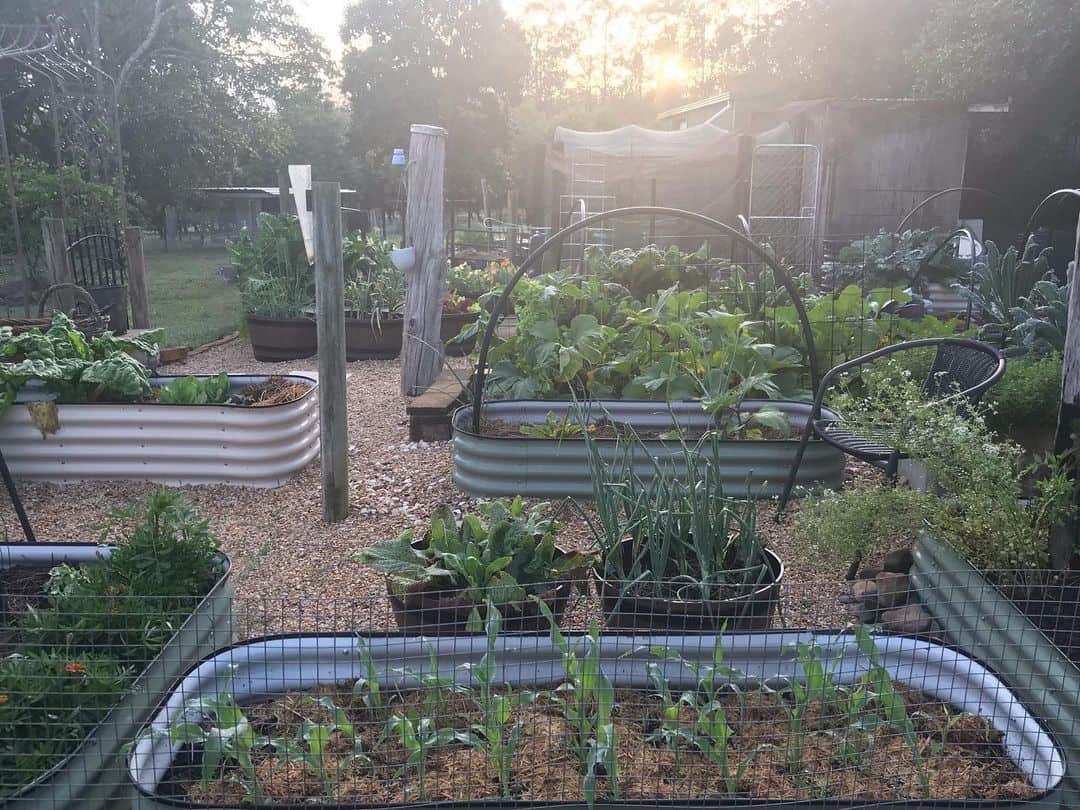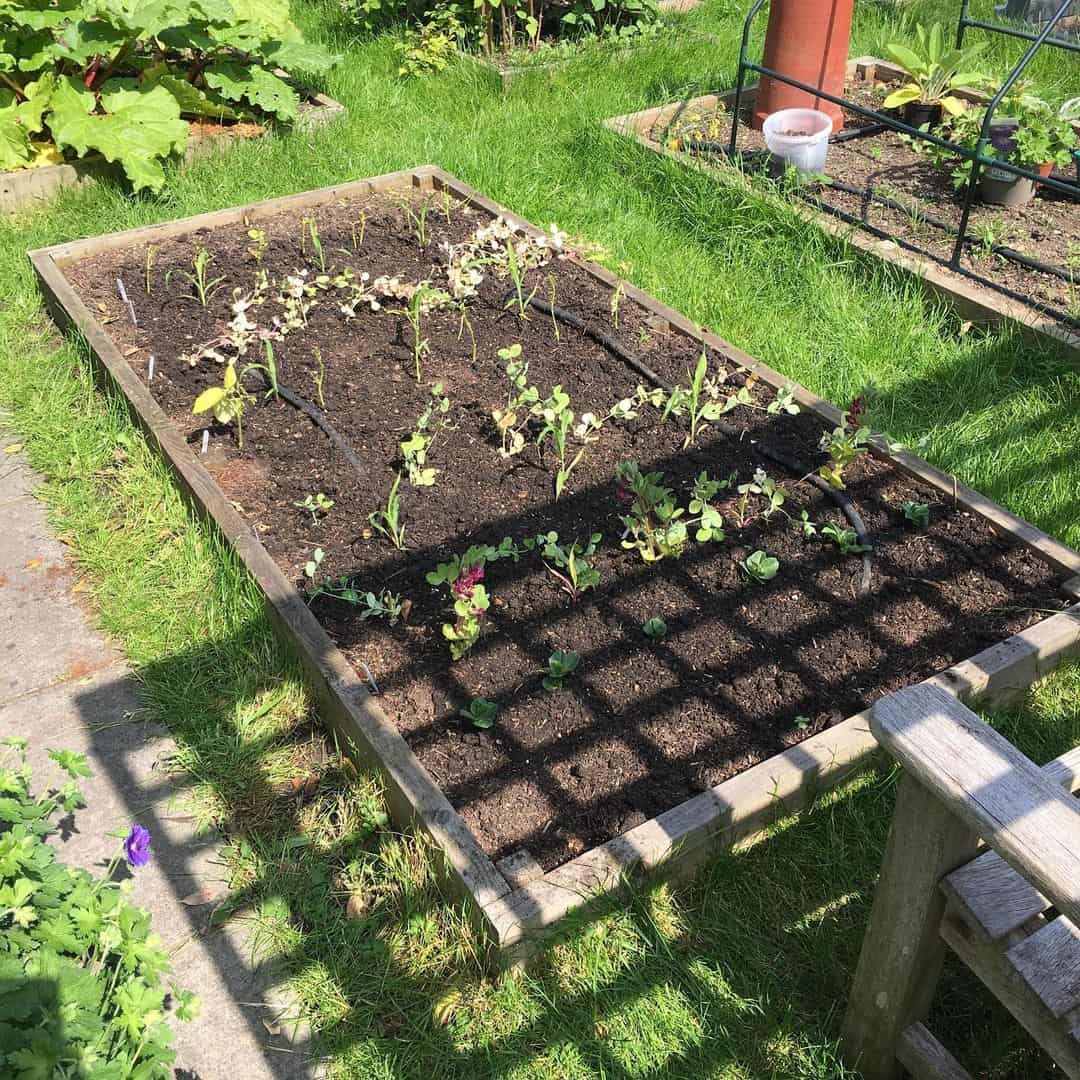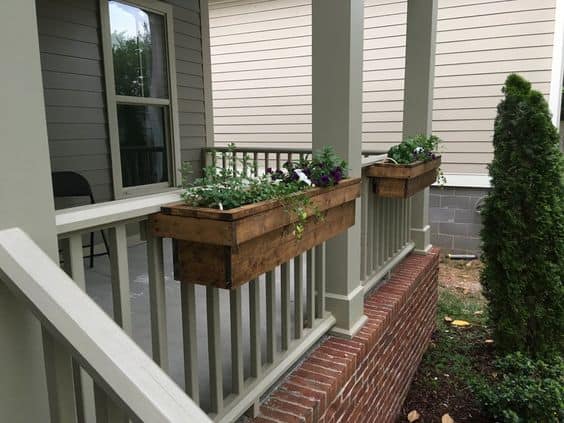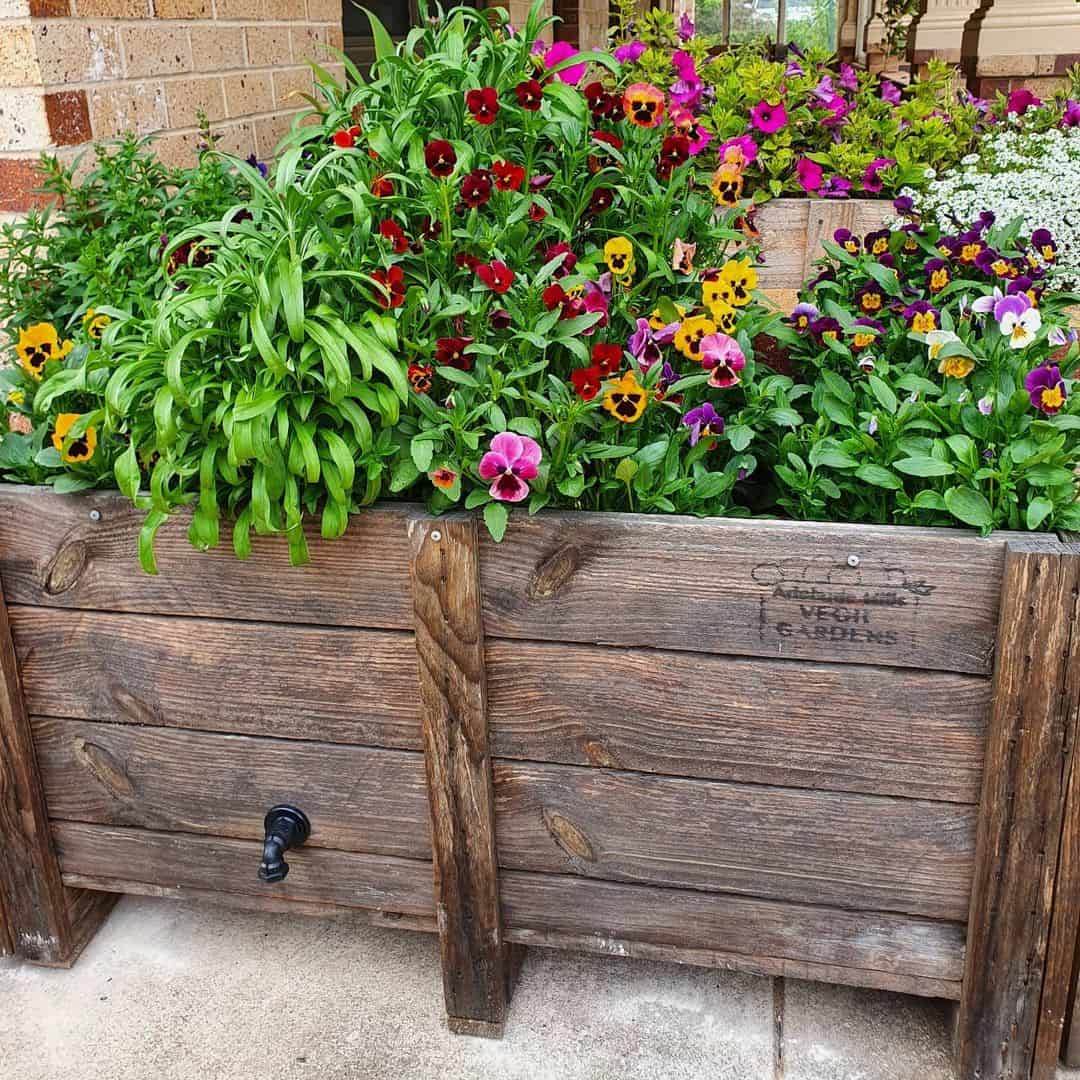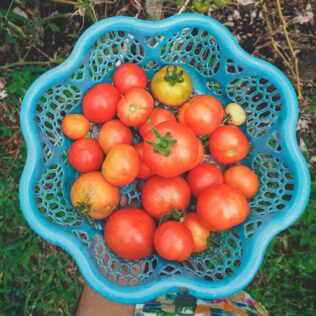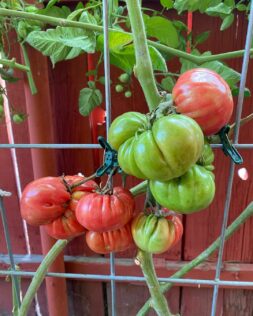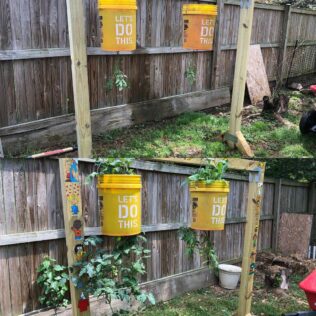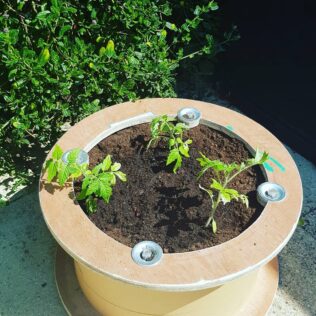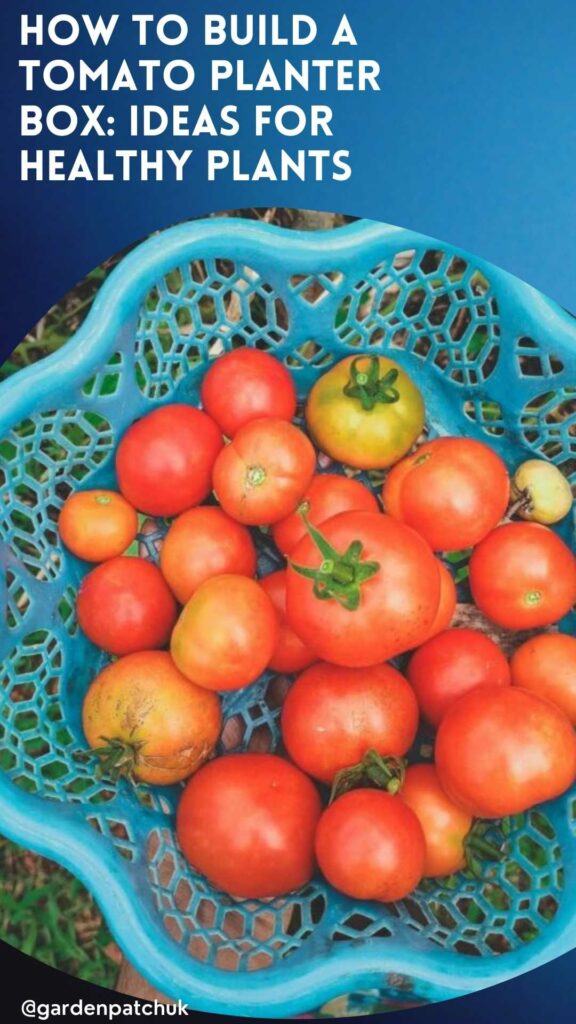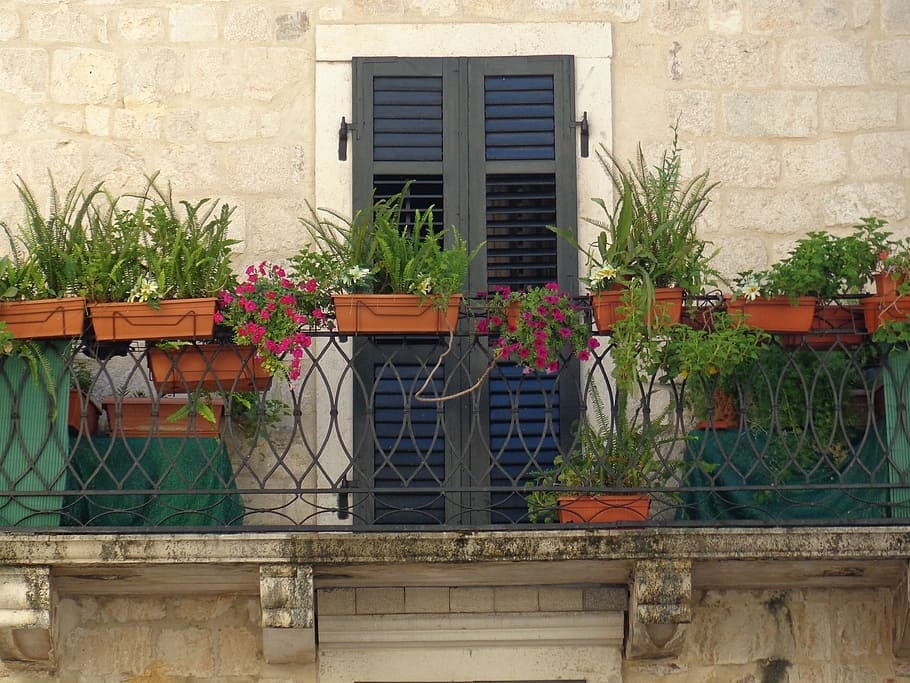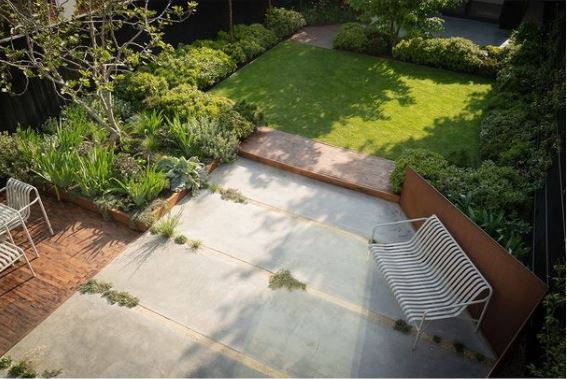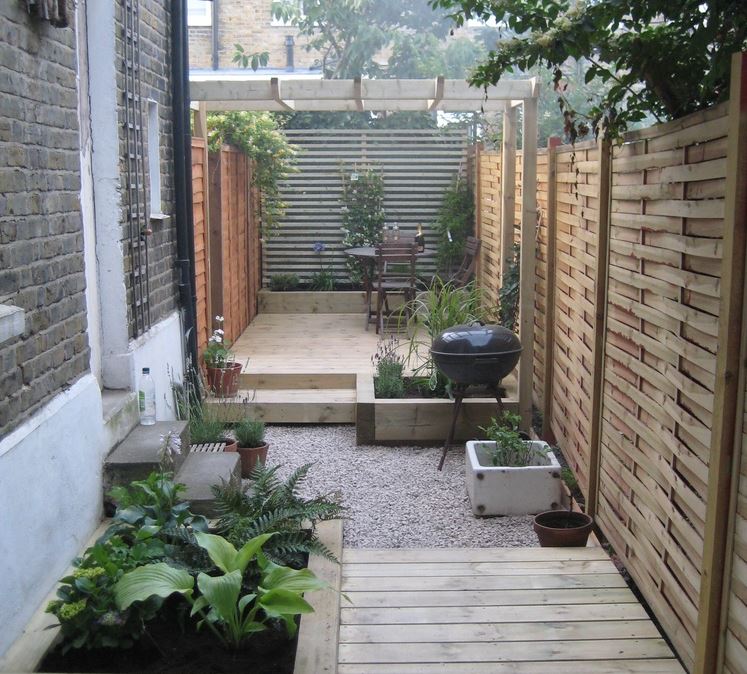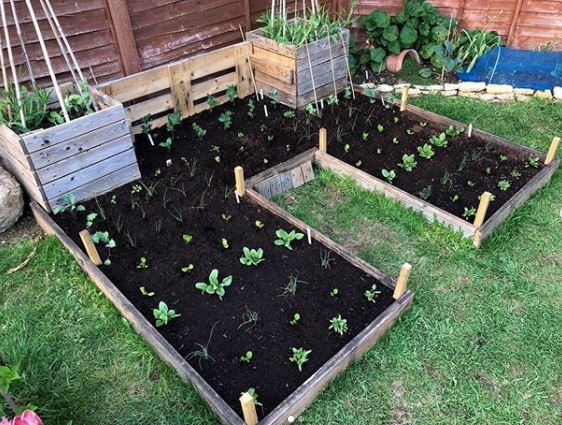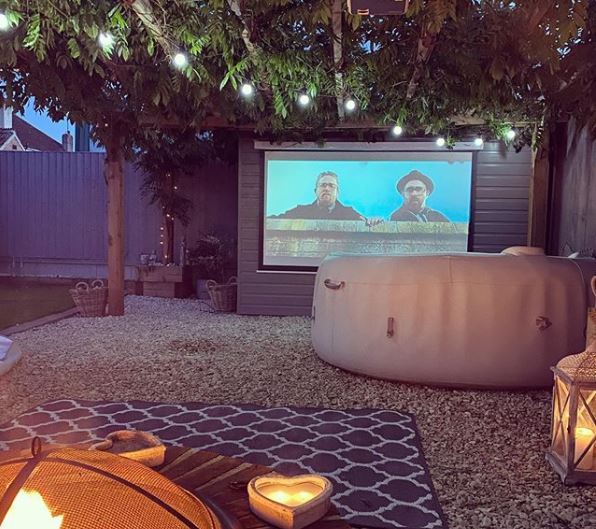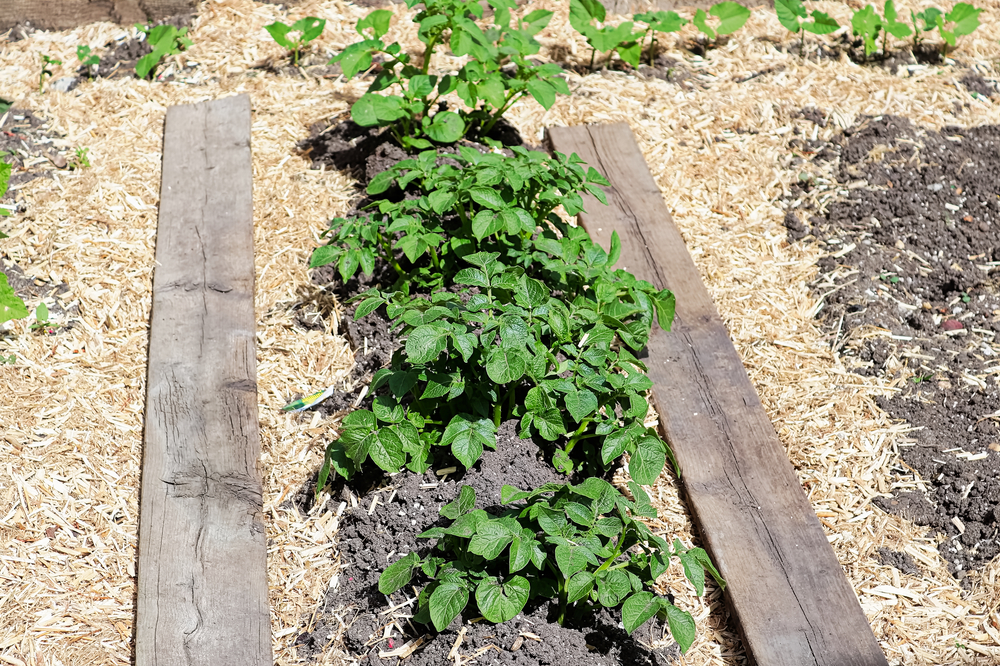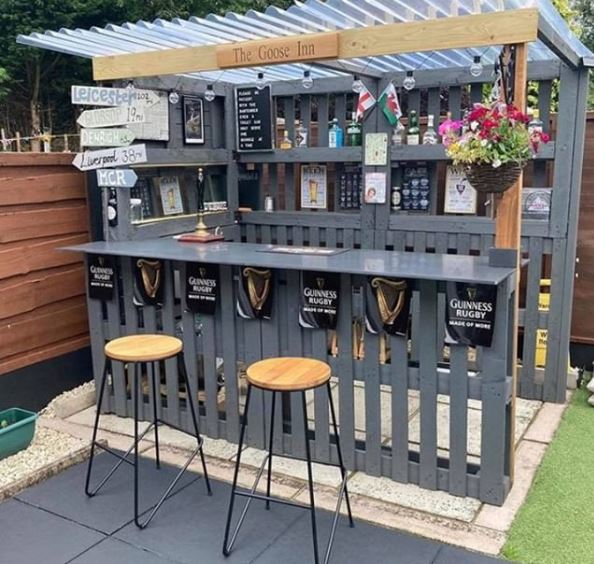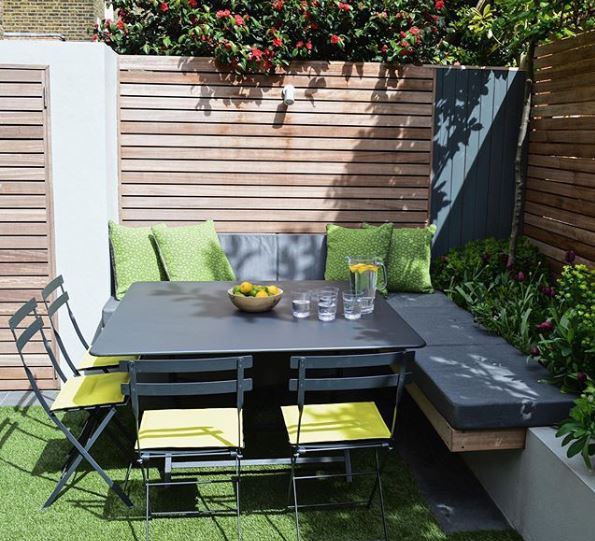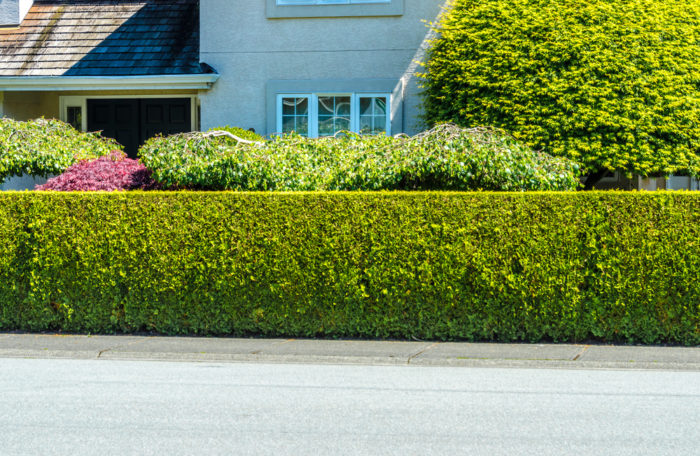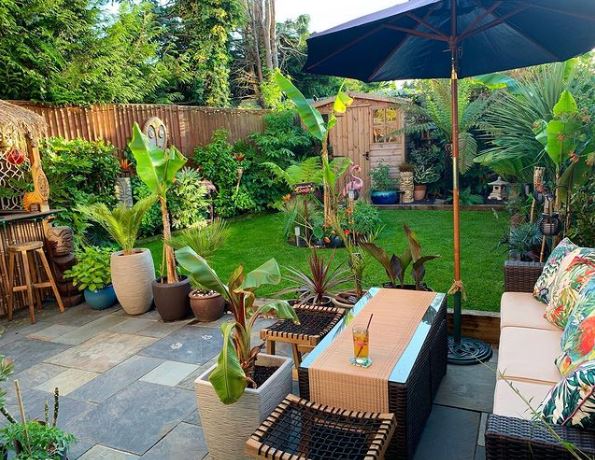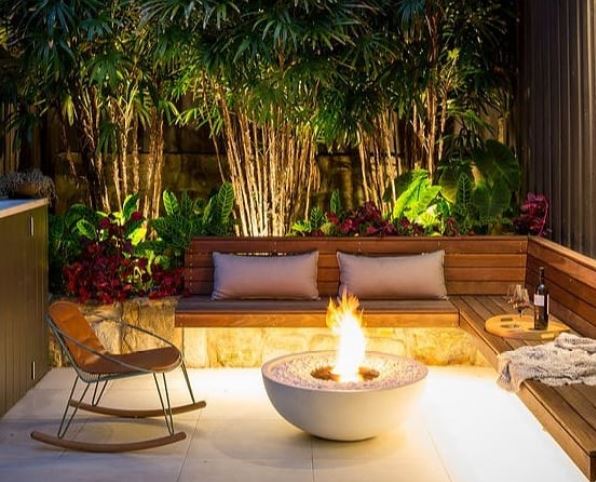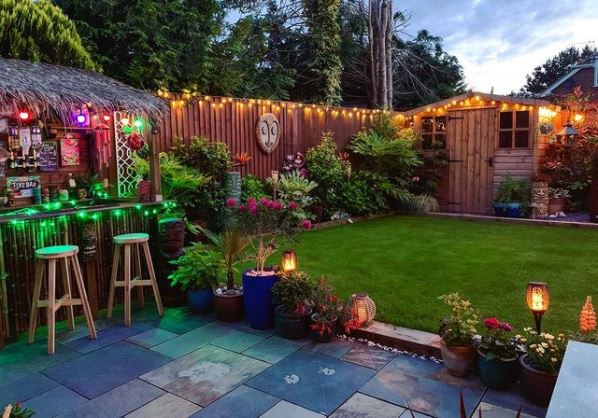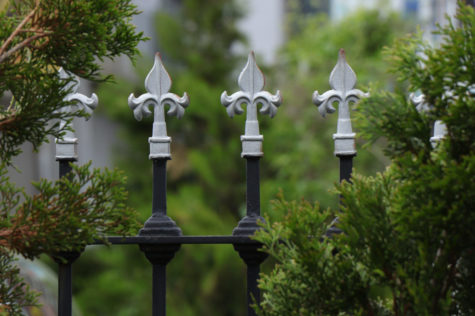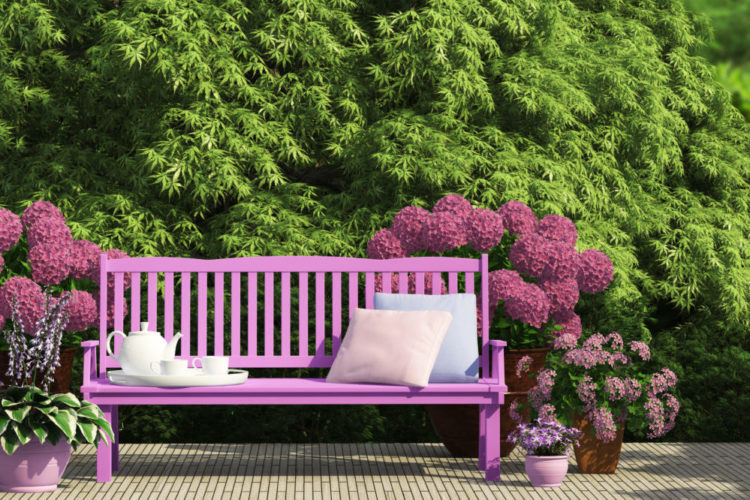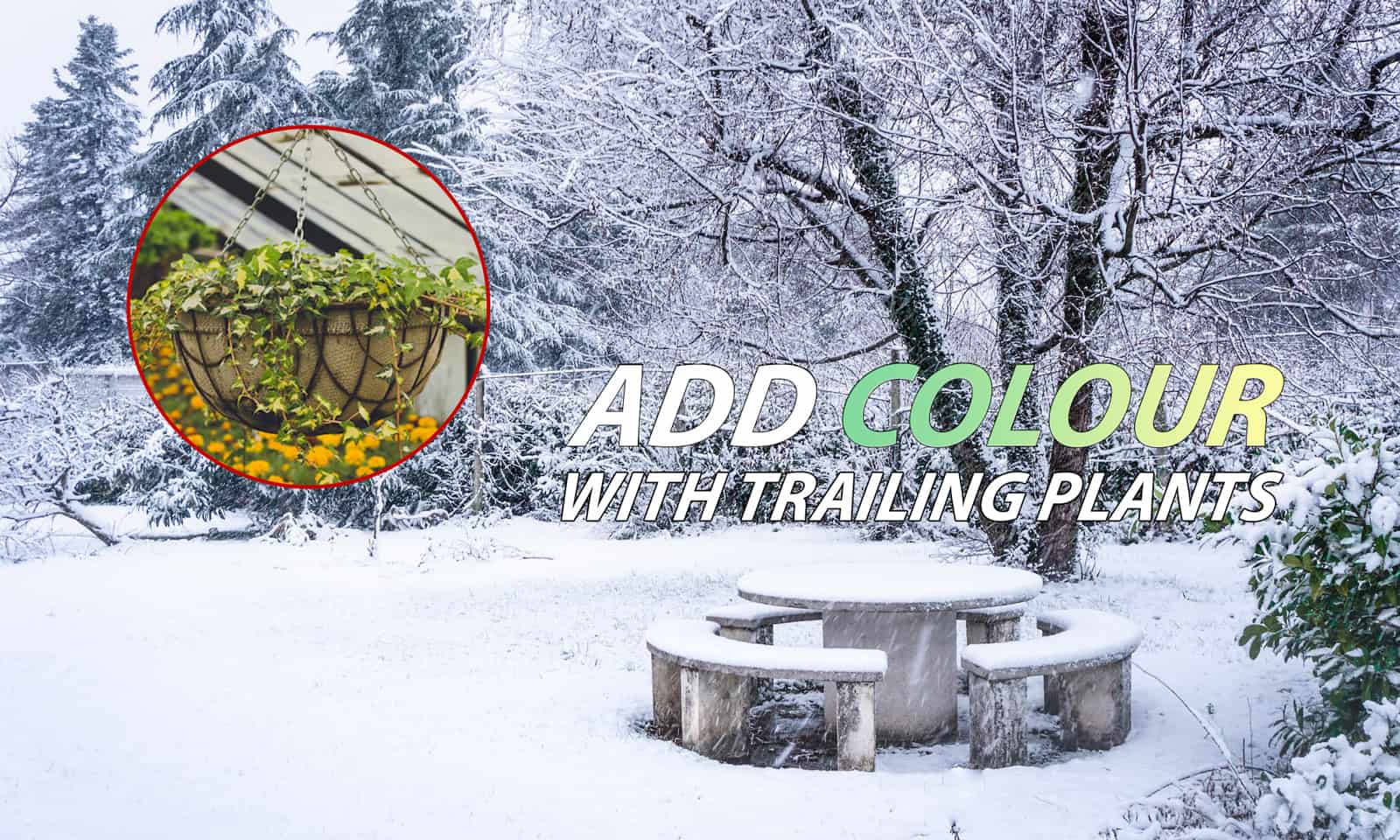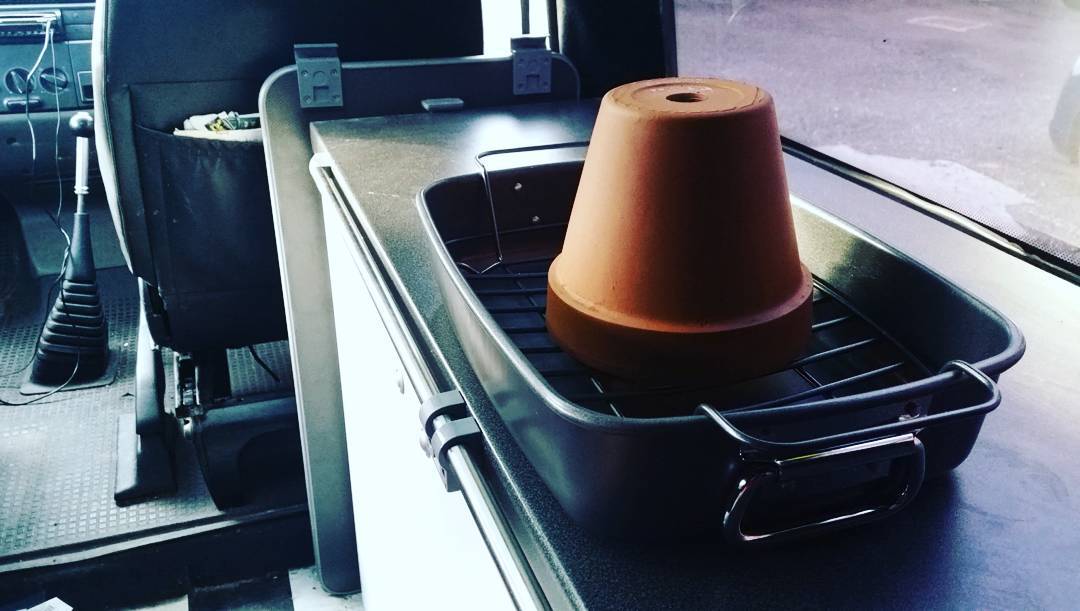When you next receive a delivery that’s packaged on wooden pallets, why not turn the pallets into something useful? Pallets are usually constructed from good, solid wood and from an environmental point of view, it’s such a waste to not use them again. So read on for some ideas on how to upcycle your pallets into stylish planters.
Most pallets come in a standard size of 48×40 inches with each deck board being 3.5 inches wide. They usually have 7 horizontal wooden planks on the front and 3 box-like horizontal supports on the back. Some of the designs below refer to cutting planks 2, 4, and 6; these refer to the front of the pallet. Some designs use the back supports to make shelves for plant pots.
Pallets make ideal planter boxes because most of them have been pressure treated. As pallets can be splintery, it’s usually a good idea to sand down your pallets before sawing. So get your protective gloves and goggles on, grab some sandpaper, sand the surface of the wood down well, and then choose a stylish design for your pallets.
1. Wall-supported pallet grow box

Image credit: @balconygardenweb
You will need some wire to make plant holders, some paints and brushes and perhaps some willing helpers!
- Simply stand the pallet vertically against a solid wall and keep it steady by fixing some L-plates to a secure wall. Drill some holes into the ground as well, to make it absolutely solid. Secure them at ground level and at 2 (or even 3) points on the wall.
- Now you have a set of pallet pot shelves to paint. Black paint could transform the pallet into something more elegant or you can bring out the inner artist in you by painting each of the boards in different colours or with patterns. Stencils can be utilised if you are not a confident artist. You can also stain the pallet if you prefer a more rustic look.
- To add your plants, you can line the back of the pallet with fabric or cardboard. Then you can use wire plant holders to affix some plant pots or wind some wire securely through the gaps in the pallet and secure them well. This is super easy and brightens up any backyard instantly. Fill the holders with pots full of herbs or annuals. These don’t need deep soil and are light enough to be supported by the pallet.
2. Wall-mounted shelf pallet planter box

Remodel a pallet into wall-mounted plant shelves. Image credit: @athomewithshannon_x
This design will look perfect on a sunny wall or if you wish to brighten a shady spot, you can add plenty of shade-loving plants. To make this design, you will need some dexterity with a saw, nails and screws to make the planter boxes, L plates to attach the boxes to the wall, a liner to make your planter box waterproof, and something to stain, decorate or varnish the wood plus a paintbrush.
- Separate the front from the back of the pallet by removing the nails which hold it in place. Using a pry bar and pliers may be necessary. Pallets are built sturdily! See the YouTube videos below, which explain how to do this in detail and make sure you wear protective gloves and eyewear. You will finish with 2 parts – one has 7 planks of horizontal wood which you will cut and use as backing boards and other pieces of wood with nails removed, which will make your planter boxes.
- Cut backing boards. Mark the pallet into pieces 3-5 planks tall to make a backing board in wood, onto which you will add the planter boxes. These can be any shape you like within the dimension of the pallet measurements. Cut the shapes to suit the area you will place the planter boxes.
- Make the boxes. Use leftover pieces of wood to create boxes, by cutting 4 pieces to make each box. You need a base, then 3 sides of equal height to make a box. The missing fourth side will be the backing wood. Make sure these boxes will fit onto the backing boards before you cut them! It is a good idea to select horizontal or vertical boards as the pattern and then assemble these bits in box format to see what they will look like. Once decided, screw the corners together and attach them to the base; now you have a 3 sided box to attach to the background board shapes already cut. These boxes will become your plant holders. Then nail the boxes to the backing shapes.
- Make several boxes to suit your space. Don’t make them too deep as the soil becomes heavier with watering.
- Let’s decorate! Now you can stain, paint or varnish the wood to suit your space. Filled with green leaves, these plant boxes will have plenty of colour, so neutral tones will work well for the planter boxes. You can just varnish them if you prefer a natural look. You can also enlist the help of children to print shapes using stampers.
- Line the boxes so that they are waterproof and do not drip water. Cut either plastic bags or recycled bubble wrap to fit each individual planter box and staple it in.
- Attach them to the wall. Almost there! You can assemble them in rows or just have one – it depends on your taste and the space available.
- Soil. Fill the boxes with soil and you are ready to plant.
3. Stacked pallet planter box

This planter looks like a star when viewed from above. Image credit: @dont_buy_it_make_it
This use of pallets requires skilled carpentry. You will make 5 boxes, sequentially smaller in size, which then fit one on top of each other to make a planter. The corners of the boxes almost look like a star shape when seen from a bedroom or above, so this planter will look excellent from many viewpoints in a garden.
This type of upcycled planter looks great on a lawn or patio and you can use different soil in each planter box, enabling you to combine plants that would not normally grow so well together. Try placing heather, which needs more acid soil, next to flowering alyssum, pansies, petunias, or busy Lizzies, which prefer a more neutral soil PH.
To make this box:
Decide on the size of the biggest box first, then cut the planks to suit. Assemble 4 planks in a box shape so that you can see the size as you progress to box number 2 and so on.
Make the boxes by nailing the corners together. If you want to use planks for the base as well, save the offcuts for this purpose and fix them to the base of the box.
Drainage. If you use wood for the base, you need to allow for some drainage. Drill several holes in each box base. The largest planter box will rest on soil so this may not need a base.
Place the largest box on the lawn or in the location. Don’t fill this with soil just yet, if you are planning to decorate but you can add bricks, some pebbles, gravel, or sand in the centre, as this will be covered by another planter box. Adding these will also help drainage.
Assembly. Place box 2 at right-angles on top of the first box. Continue to add boxes sequentially and at right angles to the previous one, remembering to add some pebbles in the centre of the boxes except the highest one, which will be full of soil.
Stability. Secure each box to the one below with nails if it feels unstable. The weight of the soil normally keeps the shape in place. Now the planter box is assembled, you can decide if you are happy with the natural look of the pallet or if you prefer to add a stain, oil, or varnish.
What will you plant? If you’re planting herbs or other edible plants you’ll need to use a suitable stain, varnish, or paint for the planter. Try tung oil, raw linseed oil, hemp oil, or an eco-friendly wood stain. If the flowers are purely decorative, then you don’t need to worry too much.
You might like: What is the best wood for a planter box?
4. Four pallet upright cube planter

You’ll need a lot of soil to fill this pallet planter! Image credit: Sandy Jensen
If you have several pallets and lots of space, you can stand 4 pallets vertically to make a cube planter. This makes a stunning centrepiece on any lawn and will be the envy of your dinner guests! It can also encourage discussion about sustainable wood and the value of recycling and upcycling.
This will be a large planter and it needs to be secure so that your strimmer or lawnmower doesn’t damage it once assembled.
Sand down each of the pallets and stand them vertically. Then attach the corners of each pallet together with nails.
Fill the base of the pallet planter with leftover stones or bricks because a planter this size will hold a lot of compost! This planter is a good size for a tree which would benefit from the added drainage the pebbles will bring. Most pallets have been pressure treated, so wood rot shouldn’t be much of an issue.
Read more: How to fill a wooden planter box
Top up with some garden soil and compost and the planter is perfect for a big shrub or even tree. A yucca plant would look amazing in something this deep and it will grow to fit the available space. A small maple would add dazzling autumnal colour too.
If you want to add flowers to the outside of this cube planter, then make a shelf for flower pots along the outside. Add a plank of wood in the space under one of the horizontal planks, and nail it in securely. Once a shelf is in place, you can add small annuals or succulents mixed with marigolds, petunias, etc. The great thing about this type of planter is that you can vary the soil in each pot.
Childhood beach mementos. These shelves can also be filled with decorative stones that little ones collect from every beach they’ve visited or as a useful storage space for small garden toys.
5. Single pallet herb garden

Create a pallet herb garden. Image credit: @hayloft_to_home_xx
Have you got a warm, south-facing wall? Transform a pallet into a herb garden. Pallets are practically ready-made plant holders, just add a plank to the base of the horizontal supports and fill with herbs to create a rustic, countryside feel in your back garden. You could paint the name of each herb on the pallet if you’re feeling artistic! Hang the pallet up or lean it against a wall and enjoy the aroma and taste of fresh herbs all summer.
6. Horizontal pallet planter with tea holder
If you’re a gardener, my guess is that you make frequent cups of tea to refresh you while you are out and about in your garden. This pallet idea gives you both a new planter and a solid mug holder!
- You will need to remove a part of the interior of the pallet carefully, allowing the space around it to become your space for putting tools or tea. Think a width of 2 mugs or so and mark this with a pencil.
- Using protective eyewear and gloves, saw this rectangle or square shape and remove the wood. After this, you will need to sand down the edges well and seal them with sealant or oil.
- In the central space you can now place a decorative pot or line the space with a waterproof liner and staple this in around the edges. You can make a decorative border with wood, shells or stones glued in place. The space at the sides for placing a cup of tea or maybe even to sit offers you a chance to relax while you are gardening. Time for a cuppa!
7. Segmented pallet planter box

Grow plants with differing soil needs together. Image credit: @1001pallets
If you have plants that each require different soils, then using a pallet to separate them works really well. You can decorate the pallet so visitors notice the plants, not the recycled wood.
- Place the pallet on the ground and saw off planks 2, 4 and 6, allowing the remaining planks to be the border of your planter boxes.
- Fill in the gaps! Use the sawn wood to fill the spaces in the individual spaces so that each box is separated from its neighbour.
- These can now be painted, stained and varnished to suit your space. This will allow room for 6 different plants and you can put ericaceous soil in one to suit a blueberry and sandy soil in another for a succulent. Normal compost in another for herbs like basil and your new planter is full.
Plans for pallet planter boxes
Here are some ideas to help you use your pallets as planter boxes.
https://www.wikihow.com/Build-a-Planter-Box-from-Pallets
https://www.youtube.com/watch?v=iV4lxbpEaAY
https://www.youtube.com/watch?v=iV4lxbpEaAY
Tina’s tips for your pallet box planters
- If you’re adding pots to your pallet planter shelves, don’t use really heavy plant pots such as earthenware pots. The extra weight may cause the wood to break.
- For super eco-friendly pots, make your own out of old plastic peanut butter containers or yoghurt pots. Simply drill a few holes in the base to aid the drainage. Use leftover waterproof paint from other DIY projects to decorate. Individual pots can be given to keen, young artists who may like to experiment with using handprints or shell shapes to paint around.

Save this pin for later




















